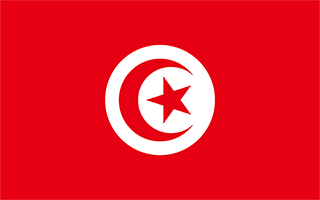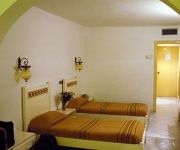Facts and Data
Webpages:
Official Unesco Page
Basis Data:
Unesco World heritage since: 1988
Size of heritage: 68 ha
- Buffer zone: 154 ha
Coordinates:
Longitude: 10,104°
Latitude: 35,682°
Summary
Founded in 670, Kairouan flourished under the Aghlabid dynasty in the 9th century. Despite the transfer of the political capital to Tunis in the 12th century, Kairouan remained the Maghreb's principal holy city. Its rich architectural heritage includes the Great Mosque, with its marble and porphyry columns, and the 9th-century Mosque of the Three Gates.
Location on Map
Show bigger map on Openstreetmap
Introduction
Kairouan, located in the Gouvernorat de Kairouan in Tunisia, is a UNESCO World Heritage site that holds immense historical and cultural significance. Known as the "City of 50 Mosques," Kairouan is considered one of the holiest cities in the Islamic world and is a major pilgrimage site for Muslims. Its rich history, architectural marvels, and religious importance make it a must-visit destination for travelers.
History
Kairouan was founded in 670 AD by the Arab general Uqba ibn Nafi, who established it as the first Islamic city in North Africa. The city quickly grew in importance and became the capital of Ifriqiya, the Islamic province that encompassed present-day Tunisia, eastern Algeria, and western Libya. Kairouan flourished under the Aghlabid dynasty in the 9th century, becoming a center of Islamic learning and culture.
During this period, many architectural wonders were constructed, including the Great Mosque of Kairouan. Completed in 836 AD, the mosque is one of the oldest and most important Islamic buildings in the world. Its intricate design, with its hypostyle prayer hall, minaret, and courtyard, showcases the architectural brilliance of the time.
Over the centuries, Kairouan faced numerous invasions and conquests, including those by the Normans, Spanish, and Ottomans. Despite these challenges, the city managed to preserve its cultural heritage and maintain its status as a center of Islamic scholarship.
Current State
Today, Kairouan remains a vibrant city that attracts both religious pilgrims and tourists interested in its rich history. The UNESCO World Heritage site encompasses the old city, which is surrounded by medieval walls and contains numerous architectural treasures.
The Great Mosque of Kairouan continues to be the centerpiece of the city. Its stunning minaret, known as the "Tourist Tower," offers panoramic views of the city and is a symbol of Kairouan. The mosque itself is still in use and is a place of worship for the local Muslim community.
Aside from the Great Mosque, Kairouan is home to several other notable mosques, such as the Mosque of the Three Gates and the Mosque of the Barber. These mosques showcase different architectural styles and provide visitors with a glimpse into the city's diverse history.
Exploring the narrow streets of the old city, visitors can discover traditional houses, known as "Dar," with their characteristic courtyards and intricate tile work. The Medina of Kairouan, with its bustling markets and artisan workshops, offers a glimpse into the daily life of the locals and is a great place to shop for traditional crafts and souvenirs.
Preservation efforts are ongoing to protect and restore the historic buildings and monuments of Kairouan. The city's inclusion on the UNESCO World Heritage list has helped raise awareness about its cultural significance and attract funding for conservation projects.
Conclusion
Kairouan, with its rich history, architectural wonders, and religious importance, is a UNESCO World Heritage site that captivates visitors from around the world. Its ancient mosques, traditional houses, and vibrant markets provide a unique glimpse into the Islamic heritage of Tunisia. As a city that has withstood the test of time, Kairouan continues to inspire and awe visitors with its cultural treasures.
Hotels and places to stay
CONTINENTAL KAIROUAN
Videos from the area
Videos provided by Youtube are under the copyright of their owners.







